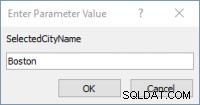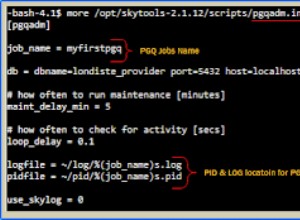Au lieu de créer votre propre code Java pour effectuer le chiffrement, je vous recommande vivement d'utiliser la fonctionnalité de chiffrement disponible dans le DBMS_CRYPTO
forfait. Il prend en charge AES/ECB/PKCS5Padding cryptage, il vous suffira de définir le "type" approprié lors de l'appel des fonctions de cryptage/décryptage. Vous trouverez ci-dessous le même exemple de la documentation, mais avec le type de cryptage modifié en fonction de ce que vous utilisez dans votre code Java.
DECLARE
input_string VARCHAR2 (200) := 'Secret Message';
output_string VARCHAR2 (200);
encrypted_raw RAW (2000); -- stores encrypted binary text
decrypted_raw RAW (2000); -- stores decrypted binary text
num_key_bytes NUMBER := 256 / 8; -- key length 256 bits (32 bytes)
key_bytes_raw RAW (32); -- stores 256-bit encryption key
encryption_type PLS_INTEGER
:= -- total encryption type
DBMS_CRYPTO.ENCRYPT_AES256 + DBMS_CRYPTO.CHAIN_ECB + DBMS_CRYPTO.PAD_PKCS5;
iv_raw RAW (16);
BEGIN
DBMS_OUTPUT.PUT_LINE ('Original string: ' || input_string);
key_bytes_raw := DBMS_CRYPTO.RANDOMBYTES (num_key_bytes);
iv_raw := DBMS_CRYPTO.RANDOMBYTES (16);
encrypted_raw :=
DBMS_CRYPTO.ENCRYPT (src => UTL_I18N.STRING_TO_RAW (input_string, 'AL32UTF8'),
typ => encryption_type,
key => key_bytes_raw,
iv => iv_raw);
-- The encrypted value "encrypted_raw" can be used here
decrypted_raw :=
DBMS_CRYPTO.DECRYPT (src => encrypted_raw,
typ => encryption_type,
key => key_bytes_raw,
iv => iv_raw);
output_string := UTL_I18N.RAW_TO_CHAR (decrypted_raw, 'AL32UTF8');
DBMS_OUTPUT.PUT_LINE ('Decrypted string: ' || output_string);
END;
/




